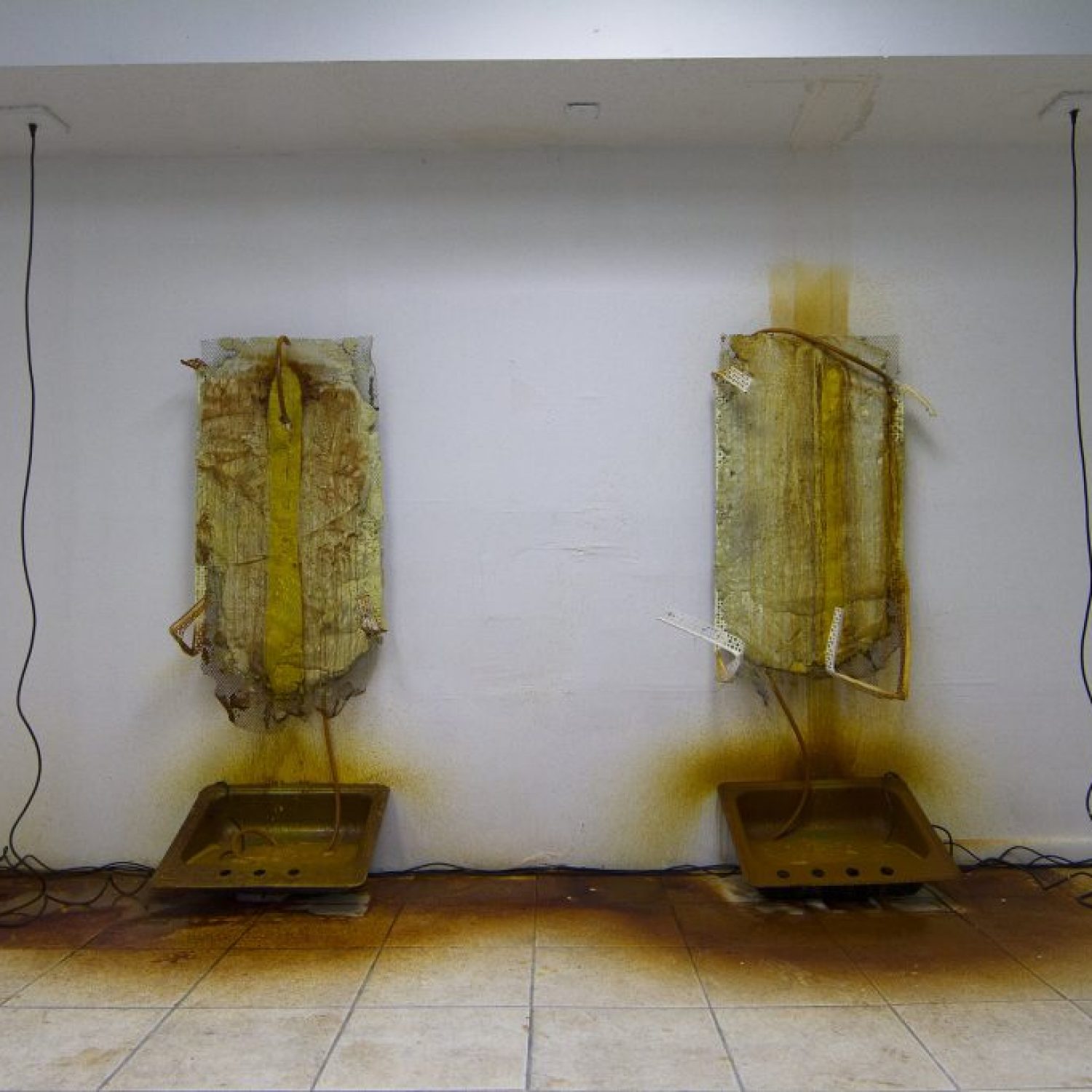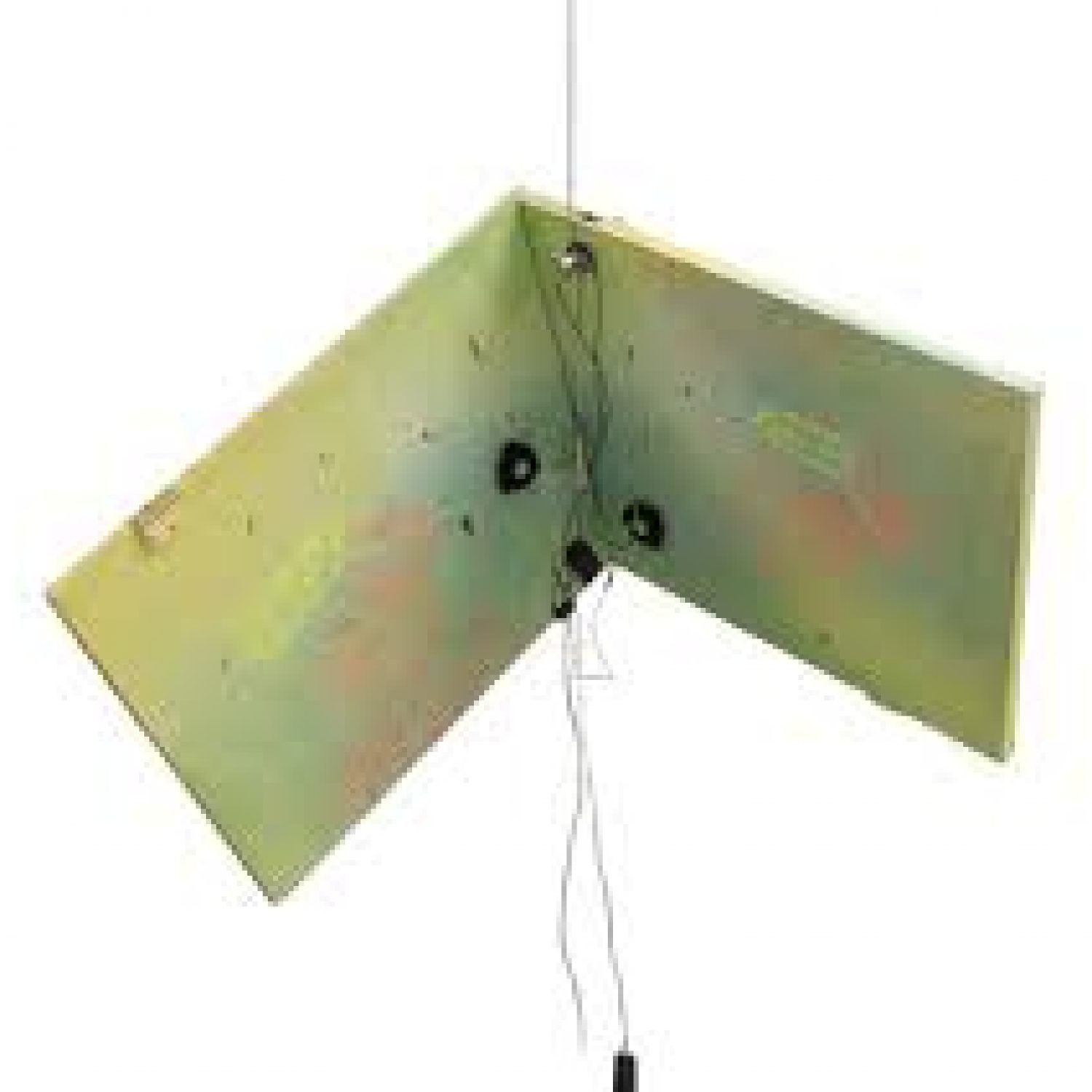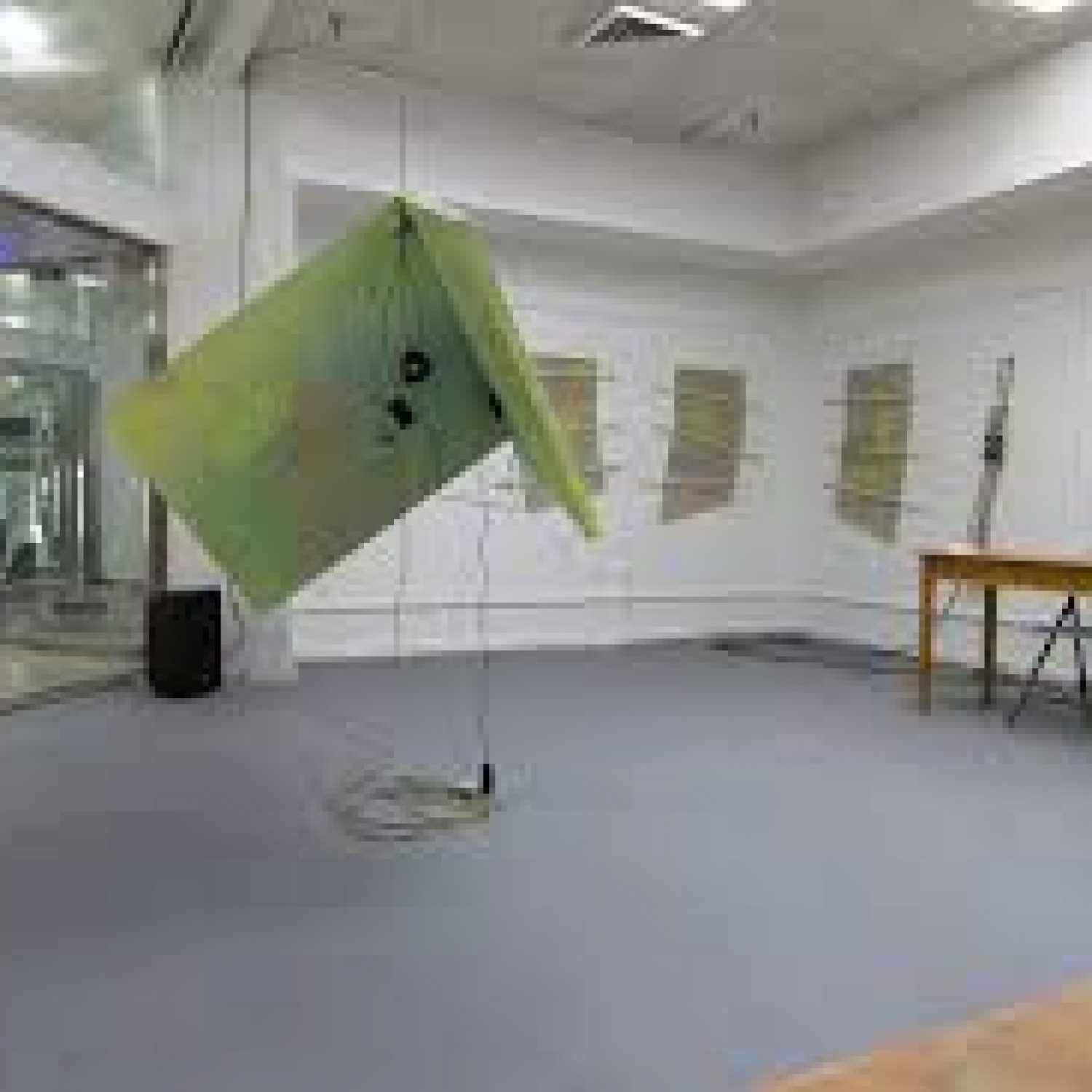Destroying the Fabric of Reality: Collapsing Systems. An interview with Rafael Vargas Bernard
Rafael Vargas Bernard is a young, humorous, creative residing in Miami, Florida. His work integrates performance, installation, sculpture and technology in ways that invites the viewer to both work with technology and listen into a mechanism that may provide some fresh answers to the present and future. His mannerisms are swift and direct and his intentions include the environment, all types of people and probabilities of success and failures into his work.
All photos: Mana Contemporary, Artist’s studio
BB: By investigating your work, I found that your work examines the collapse and regeneration of a system/s. What I mean by that is by the structure or infrastructure collapses or destroys our reality, yet the destruction provides an opportunity for us to re-create something newer, and in your work, you do that. You create these sculptures with these robotic mechanisms that provide a new way of working. That creates a whole new language of work-ability, functionality, and structure. Do we want governmental and socioeconomic structures to collapse? Look at Venezuela, Cuba, and even Italy. These countries are facing comic strife and are in debt billions of dollars. The structure of leadership is a culprit to the corruption that exists in the economy and segregation that exists between communities. We live in a democracy that dismisses our constitutional rights and voting power. The question comes down to: will the people have the capacity to enforce their infrastructure to build the skeleton needed for the broader structure? Will “we the people” really do for the people? Is your work a metaphor to teach the viewer how to work with a new system? Is this the only window we have to prove that something new is waiting on the other side?
RVB: I consider my interactive work a call to action challenging the passive participant (viewer) to become an active participant; not only to work with a new system, but to question it and become an integral influential part of a system. My automated work has a similar approach but focuses on participation through analysis and reaction.
BB: When I look at Air Guitar synth stick, you built a sculpture that replaced an iPhone, an old record player, and cassette player. This Devo-sculpture (as I term it) is pure garbage delightfully reinvented and an example of seizing a moment of chaos and destruction to showcase humanity’s intelligence by presenting how to reinvent the wheel.
I enjoy that you allow the public to participate in your work. More specifically, in your works where there is robotics. Now I know that some produce sounds and those sounds maybe something that we are familiar with or unfamiliar with. So you provide a space for the public to hear this. Moreover, within those sounds, I am sure that messages are emitted but do you think the audience is fit and ready to receive? Are we all on the same level and have the capacity to perceive those unconscious sound-waves that can give us more information and data on things that we need to do for ourselves as humanity? I am very critical on this topic. People’s behaviors and social tendencies have destroyed my reality and sense of hope. I think that it is wise to psychologically challenge the viewer/opponent by informing them we are not competent enough to come out the other side, smarter, better, and wiser. I think society flaunts a self-righteous and empty attitude of “positive vibes” and evolution.
RVB: The sounds emitted by my works are directly related to and produced by the systems they are a part of and often directly affected by the participant’s actions. Although the generative process and aesthetic of the sounds in my works are constructed from an intellectual and conceptual perspective, the intention is that the effect of these on the participant be abstract and emotive.
BB: Although I love the participatory opportunities, you extend to the public, my concern is; if we know our systems fail because humans err inequity, why continue giving them chances-even at play? What I critically mean by this is that not everyone has the structure within themselves to recreate or regenerate systems that benefits others too. What I see is the omission of expected or required action. The collapse of systems is a chance for others to make it better for themselves. Societies live in the constant state of Ouroboros. Through the process of collapse or devouring ourselves, a new wholeness is found, well, at least we would like to believe this idea. On May 19th you posted the image of a sculpture. The sculpture has a yellow hue, a few cables and suspended in midair. When looking at the piece, I found a few things.
One, that it resembles a chair, and a chair is an object that is designed to be practical for the user. The second thing I found about the sculpture is that it omits sound (is this correct)? The third feature I noticed is how the sculpture seems right about to fold into itself. The fourth and fifth characteristics are the sculpture serves as a shelter, a home of protection nd solace or as an object to cowardly shield oneself from outside elements- too afraid to confront. It resembles the roof of a house. One can either protect themselves from outside elements or utilize it hide underneath itTherefore I concluded that: we sit back to receive accurate or inaccurate information that may be practical for our comfort or the poison to the demise of the structure. Am I analyzing your work on a whole other level, or is my analysis somewhat correct?
RVB: Close enough to be correct
BB: Culture is learned behaviors and ways of being because we are “born into it.” Systems are cultures. Many of us are accustomed to these ways, and there is a behavioral tendency or rather a “culture of comfort” as anthropologist Sarah Mahler explains that we do things based on patterns, things we know or are born into. One of those patterns is failure. The other is a success. It is the human species that has the mental capacity to reason, but we selfishly make our immediate environments, comfortable systems for ourselves because it what we inherit and know. When I examine your work, it is apparent that you are allowing a mechanical device to explore a collaborative effort with the human race. An effort that benefits both entities.I do not think that artificial intelligence is comfortable for any of us (except for those of us born into it: which is the true meaning of “culture”). We are forced to face a culture of technology we have to slowly adapted to and have done so since the 80’s (publicly). Should AI (artificial intelligence) or robotics be given a chance to change our perception to collaborations and how that can benefit us in the present to the future? After all, humans seem handicap in many areas of labor and community.
RVB: AI, AR, and robotics can help us be more productive and achieve tasks impossible without their help, but they can also make us comfortable to the point of slothfulness. We should be actively conscious of our changing systems and perceptions and take an active part in how we evolve and change as a society.
BB: In History class and the media, we are reminded of humanity’s horrifically violent failures. Do your mechanisms provide the viewer to an opportunity to acquaint themselves to a mechanical future- a future where the structures tend to industrialize our ability to repair and function properly? Why give the public the power to work with such an idea of empowerment when perhaps the audience is comfortably numb and seeking a sense of entertainment in art? Do you think they take the message seriously once they have participated with your work?
RVB: I have learned to not expect. Humans are humans and will do whatever meaningless random thing satisfies their whims. My intention is to give an opportunity for direct influence over a system as a method for engaging and empowering. A person may or may not take advantage of this opportunity. The work can still be appreciated by experiencing it in use by someone else or inactive/dormant. As in “real” life, one can be present and passive and be satisfied with an incomplete or superficial experience. The viewer has the option to be as active and experience as much as they want to. No matter what, it’s still Art and it’s still entertainment.
BB: Some of your work reminds me of prosthetics. There is a photo on your Instagram page uploaded on May 4th where you state “Got some new helping hands.” It is funny. Your assistant is only temporary and quite practical at the moment. Many of your pieces brilliantly portray the temporal environment and material (found in the fleeting moment of despair and debris) into probable, sophisticated arrangements that serve to function. I know that a large part of your creative interventions stemmed from the disaster following hurricane Maria. Although it was a dark moment and a far cry from the Emerald City, your sense of humor quenched all thoughts despair into one of finding solutions to the problem. Have you always seen the rainbow and the pots of gold in your life, or did that particular incident in your life transform you into your better version?
RVB: I have always used humor to deal with difficult subjects. But, after living through the aftermath of Hurricane Maria; plus other things that were going on in my life during that time, I was better able to see the solutions, opportunities, and positive aspects of this shit-storm called life.
BB: Rafa, you are funny.
by Belaxis Buil




